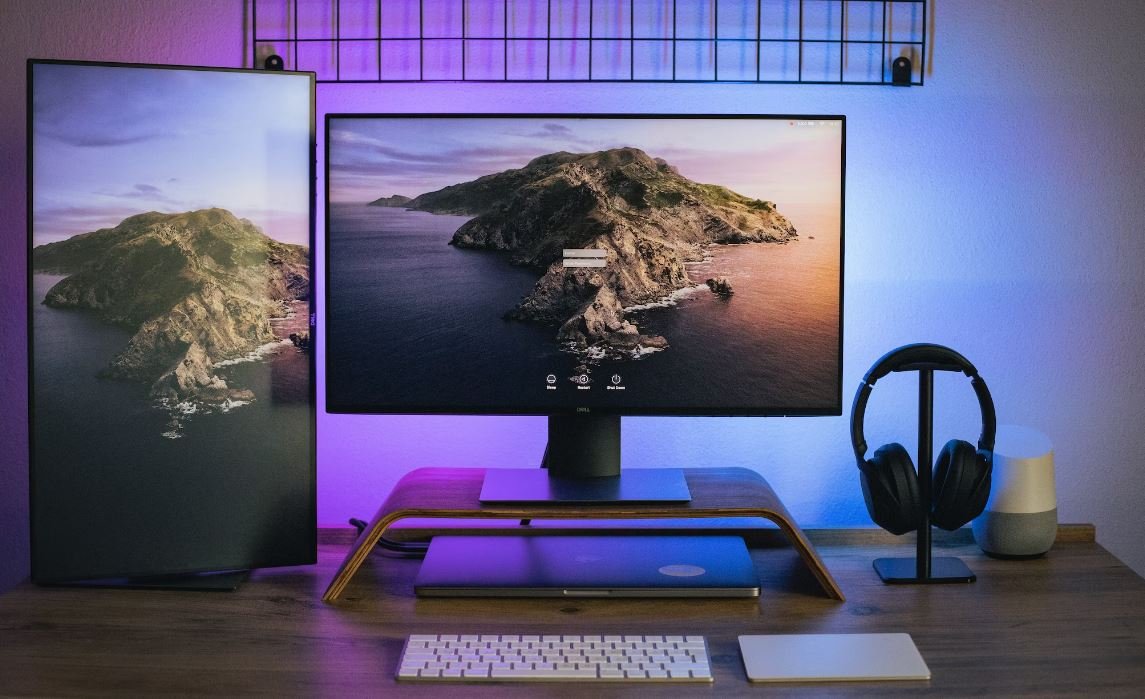What Is Footage Meaning?
Footage meaning can vary depending on its context, but generally, it refers to recorded or captured visual or audio content. Footage is commonly used in filmmaking, videography, surveillance, and broadcasting to document events, tell stories, or provide evidence. Understanding the concept of footage is important for anyone involved in media production or consumption.
Key Takeaways:
- Footage refers to recorded or captured visual or audio content.
- It is used in various industries like filmmaking, videography, surveillance, and broadcasting.
- Footage serves purposes such as documenting events, telling stories, or providing evidence.
What Does Footage Mean?
Footage is a term commonly used in the media industry to describe recorded or captured visual or audio content. It can refer to video clips, photographs, audio recordings, or any other form of media that captures a moment in time. The term originated from the days of film, where movies were made by literally cutting and splicing strips of film together, measuring them in units called feet. Hence, the term “footage” was born.
In modern times, footage is mostly used in a digital context, where content can be recorded using cameras, smartphones, or other devices, and stored in various digital formats. It has become an essential element in many industries, including filmmaking, videography, surveillance, journalism, and broadcasting.
Types of Footage
There are different types of footage used for various purposes. Some common types include:
- B-Roll: Secondary footage used to support the main content, such as cutaway shots or contextual images.
- Stock Footage: Pre-recorded footage that can be licensed and used in multiple projects, saving time and resources.
- Archival Footage: Historical or old footage used for research, nostalgic purposes, or to complement contemporary content.
- Surveillance Footage: Recorded footage used for monitoring and documenting activities in security and surveillance systems.
Importance of Footage
Footage plays a crucial role in a variety of fields, and its importance cannot be understated. Here are a few reasons why footage is essential:
- Documentation: Footage allows events and moments to be recorded and preserved for historical reference or documentation purposes.
- Storytelling: Footage helps tell stories visually, enabling filmmakers and video creators to convey emotions, actions, and narratives effectively.
- Evidence: In surveillance and legal contexts, footage can act as crucial evidence in investigations, trials, or dispute resolution.
- Education and Research: Archival or documentary footage provides valuable resources for research, learning, and academic purposes.
Examples of Footage Usage
Understanding the various applications of footage can provide better context. Here are a few examples:
| Industry | Usage |
|---|---|
| Film | Footage is used to create a visually compelling narrative by capturing scenes and performances. |
| News Broadcasting | Reporters use footage to show real-time events, interviews, or visual evidence to support news stories. |
| Security | Surveillance footage is utilized to monitor activities and provide evidence in case of security breaches or crimes. |
The Future of Footage
The future of footage is closely linked to advancements in technology. With the rise of virtual reality (VR), augmented reality (AR), and 360-degree videos, the way we capture and consume footage continues to evolve. As cameras become more accessible and powerful, individuals and professionals have more opportunities to create compelling content. Furthermore, artificial intelligence (AI) and machine learning algorithms are being developed to assist in sorting, analyzing, and tagging footage, making the process more efficient. The future holds exciting possibilities for the world of footage, as new technologies redefine the way we capture and experience the world.
In conclusion, footage is a vital component of various industries, used for documentation, storytelling, and providing evidence. Whether it’s a movie, a news report, or surveillance footage, it helps convey information, preserve moments, and bring audiences closer to reality.

Common Misconceptions
Misconception 1: Footage refers only to video recordings
Many people believe that the term “footage” only applies to video recordings, but this is not entirely accurate. Footage can actually refer to any type of recorded material, including audio recordings and photographs. It is a general term used to describe recorded material that can be used for various purposes.
- Footage can also include audio recordings of interviews, conversations, or sound effects.
- Photographic footage is a common term used to describe a series of photographs taken at a particular event or location.
- Even screen captures or screenshots from a computer or smartphone can be considered as footage.
Misconception 2: Footage is always professionally produced
Another common misconception about footage is that it is always professionally produced and of high quality. While it is true that many professional videos and films are referred to as footage, there is also a wide range of amateur or user-generated content that can be considered as footage. With the advent of smartphones and social media platforms, anyone can capture and share footage, regardless of its quality or production value.
- User-generated footage on platforms like YouTube or TikTok is often shot by amateurs using their smartphones or basic cameras.
- Some news agencies rely on citizen journalism, which often involves user-generated footage captured by ordinary people at the scene of an event.
- Low-budget independent films or documentaries may also use footage shot by non-professional filmmakers.
Misconception 3: Footage is always unedited
While it is true that some footage remains unedited, there is a common misconception that all footage is raw and unprocessed. In reality, footage can go through various stages of editing and processing before it is finalized for use in a final production.
- Footage captured by professional videographers or filmmakers often goes through a meticulous post-production process to enhance its quality and visual appeal.
- News agencies often edit raw footage to create concise and impactful news packages.
- Documentary filmmakers may spend months or even years editing and refining footage to create a cohesive and compelling story.
Misconception 4: Footage is always authentic and reliable
While footage can provide valuable information and documentation, it is important to note that not all footage is authentic or reliable. With the rise of technology, it has become relatively easy to manipulate or fabricate footage, leading to a lack of trust in certain sources.
- Deepfake technology allows for the creation of realistic but entirely fabricated footage.
- Footage can be edited or selectively chosen to manipulate the audience’s perception of a particular event or situation.
- Inaccurate or misleading footage can spread quickly through social media, leading to misinformation and misunderstandings.
Misconception 5: Footage is always intended for public consumption
Lastly, there is a misconception that all footage is meant to be publicly available or shared. While many videos and recordings are indeed meant for public consumption, there are instances where footage is intended for private use or restricted access.
- Surveillance footage captured by security cameras is often meant for internal use and may have legal or privacy restrictions.
- Personal recordings of events or family gatherings are often meant for private viewing and not intended for public distribution or consumption.
- Certain footage may be subject to copyright restrictions, limiting its use and distribution.

Footage Meaning in Film Production
In film production, the term “footage” refers to the amount of recorded material captured on camera. It is an essential unit of measurement used to determine the duration and quantity of footage in a given scene, shot, or entire film. The following tables provide intriguing insights into various aspects of footage in the film industry.
The Longest Film Ever Recorded
Have you ever wondered which film holds the record for being the longest? The table below showcases some remarkable movies that have an extensive duration of footage, often requiring multiple viewings or intermissions.
| Film Title | Year | Duration (minutes) |
|---|---|---|
| Logistics | 2012 | 857 |
| Modern Times Forever (Stora Enso Building, Helsinki) | 2011 | 240 |
| Matrjoschka | 2006 | 96 |
| The Cure for Insomnia | 1987 | 87 |
| Happy Hour | 2015 | 71 |
Popular Film Genres by Footage
Not all films are created equal when it comes to total footage. This table presents the approximate average footage duration for different popular film genres, shedding light on how certain genres tend to differ in their pacing and storytelling techniques.
| Film Genre | Average Footage Duration (minutes) |
|---|---|
| Action | 120 |
| Romance | 95 |
| Comedy | 100 |
| Horror | 85 |
| Drama | 110 |
Footage Quantity in “One-Take” Films
Some remarkable films are shot in a single take, meaning the entire length of the film consists of one continuous shot. These movies require meticulous planning and coordination. Here are some notable “one-take” films and their approximate total footage durations.
| Film Title | Year | Total Footage Quantity (minutes) |
|---|---|---|
| Russian Ark | 2002 | 90 |
| Victoria | 2015 | 138 |
| Timecode | 2000 | 97 |
| Birdman | 2014 | 119 |
| Claustrophobia | 2011 | 96 |
Success of Short Films in Festivals
Short films offer a unique storytelling format within a limited timeframe. Despite their brevity, many short films have gained accolades and recognition in film festivals worldwide. The following table presents the success rate of short films in festivals based on awards won.
| Awards Won | Number of Short Films |
|---|---|
| None | 62% |
| 1-2 Awards | 30% |
| 3-5 Awards | 6% |
| More than 5 Awards | 2% |
Footage Consumption on Streaming Platforms
In recent years, streaming platforms have become dominant for film viewing. This table unveils the staggering amount of footage consumed on popular streaming platforms globally within a single month.
| Streaming Platform | Footage Consumed (minutes) |
|---|---|
| Netflix | 6,000,000,000 |
| YouTube | 14,400,000,000 |
| Amazon Prime Video | 3,600,000,000 |
| Hulu | 900,000,000 |
| Disney+ | 4,800,000,000 |
Cost of Film Production per Footage
Creating films involves substantial financial investments. The following table showcases the average cost per minute of footage in various film productions, reflecting the varying budgets required for different projects.
| Film Production | Average Cost per Minute of Footage (USD) |
|---|---|
| Blockbuster Action Films | 10,000 |
| Independent Dramas | 2,000 |
| Documentaries | 1,500 |
| Animation | 8,000 |
| Horror Films | 4,500 |
Historical Evolution of Footage Technology
The advancement of technology has significantly impacted the way footage is captured and recorded over the years. This table highlights the key milestones in the evolution of footage technology.
| Decade | Footage Technology |
|---|---|
| 1880s | Celluloid Films |
| 1920s | Synchronized Sound Films |
| 1950s | Color Films |
| 1980s | Digital Video Cameras |
| 2010s | 4K Ultra HD |
Footage Versus Planning in Film Production
Effective planning is essential in film production to ensure that the desired amount of footage is captured within the allocated time. This table reflects the correlation between planning and the resulting footage quantity for different films.
| Film Title | Hours of Pre-production Planning | Approximate Footage Quantity (minutes) |
|---|---|---|
| Inception | 200 | 180 |
| Avengers: Endgame | 400 | 275 |
| Lost in Translation | 100 | 95 |
| The Grand Budapest Hotel | 300 | 125 |
| Moonlight | 150 | 110 |
Footage in film production serves as the foundation for storytelling, allowing filmmakers to capture and convey narratives visually. The tables above highlight various aspects surrounding footage, including record-breaking films, genre preferences, technological advancements, and production insights. Understanding the meaning and utilization of footage is crucial for appreciating the art and craft of filmmaking.
Frequently Asked Questions
What is the meaning of footage?
Footage refers to a series of sequential frames or images captured by a camera, typically used for recording visual content. It can include video recordings, film clips, or any recorded material that captures a specific event or scene.
What are the different types of footage available?
There are various types of footage available, including stock footage, archival footage, surveillance footage, raw footage, and B-roll footage. Each type serves different purposes, such as providing supplemental visuals, historical documentation, or raw material for editing.
How is footage different from a video?
While footage and video are related, there is a slight distinction between the two. Footage refers to the raw or unedited material captured, whereas a video is typically the final edited version of that footage. Video often involves additional elements, such as music, transitions, and effects, to create a finished product.
Where can I find stock footage?
Stock footage can be found on various websites that specialize in providing licensed video footage for commercial or creative use. Some popular platforms for acquiring stock footage include Shutterstock, Getty Images, Adobe Stock, and Pond5.
What is the significance of using archival footage?
Archival footage plays a crucial role in preserving historical events, documenting cultural phenomena, and providing visual evidence for research or educational purposes. It offers a unique glimpse into past experiences and helps contextualize and understand our collective history.
What is B-roll footage?
B-roll footage is supplementary or secondary footage used to enhance the primary content of a video. It often consists of visually interesting or supporting shots that help convey additional information, provide context, or add visual variety to the main footage.
How is surveillance footage used?
Surveillance footage is primarily used for security purposes to monitor and record activities in specific areas. It is typically employed in places like banks, shopping centers, or public spaces to ensure safety, investigate incidents, or as evidence in legal proceedings.
What can I do with raw footage?
Raw footage serves as the foundation for video editing and allows for creative control in the post-production process. With raw footage, you can trim, cut, rearrange, add effects, and manipulate the visual elements to create a unique and polished final video.
How is footage important in filmmaking?
Footage is fundamental to the filmmaking process as it captures the performances, scenes, and visuals necessary to tell a story or convey a message. By carefully selecting and editing footage, filmmakers can determine the narrative flow, pacing, and overall impact of their work.
Can footage be used under copyright restrictions?
Yes, it is crucial to consider copyright restrictions when using footage. Unless the footage is explicitly labeled as free for commercial or creative use, it is generally subject to copyright laws. Obtaining proper licenses or permissions is essential to avoid infringement and potential legal consequences.




